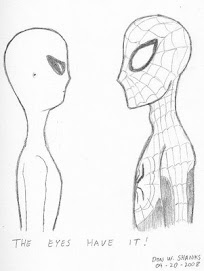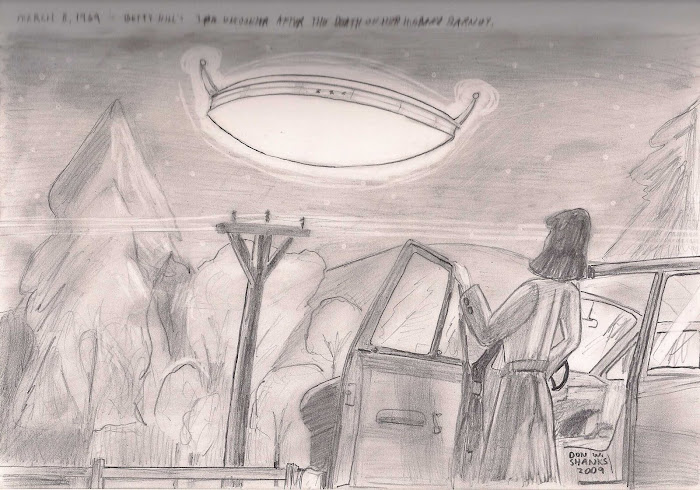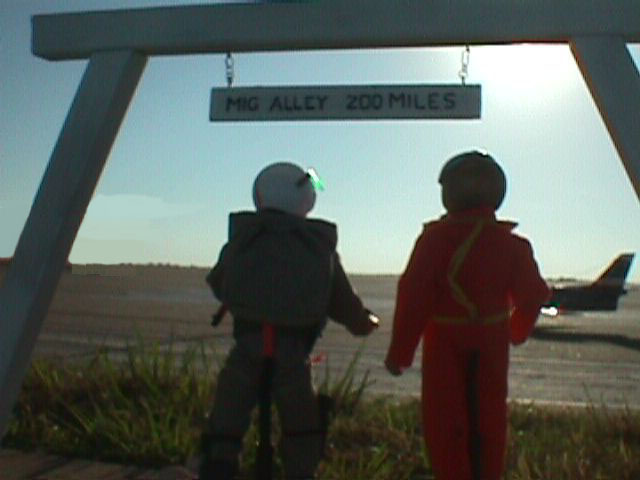
One of my hobbies is playing with radio control model airplanes and the club that I belong to help put on, what in the past was a big money maker for our organization, the T-38 Jet Rally. This year, the 9th year of the event and with gasoline prices being what they have been; it was a very low key affair. Members of our hobby that have the need for speed and can afford it – fly model airplanes that are equipped with either a duct-fan or an actual, miniature turbine.
This article will be broken up into two parts.
The first part deals with the hobby of flying model airplanes, with a focus on turbines, but will include regular duct-fan and electric duct-fan power aircraft. Recently, in the August 2008 issue of Model Aviation which is put out by the AMA (Academy of Model Aeronautics), there were several articles about model jets. One article by Pete Oochroma detailes how someone can get into the Turbine part of the hobby (“Turbine Modeling Made Easy,” page 51). In another article (“Instant Jetification” by Curtis Mattikow on page 41) deals with electric duct-fans. Finally, for larger electric jet models, there was an another article written by Curtis Mattikow entitled “Large EDF Comes of Age” on page 65.
The easiest way into the jet part of this hobby is the electric ARF (Almost Ready to Fly) or now, the two new boys of the store shelves RR (Receiver Ready) and PNP (Plug and Play). Most of the models in this class are foam models. Such models would have all the radio servos, wiring, speed controller, and the motors and duct-fans already installed. To power these models, Li-Poly batteries are used. In this mode, just the basic components are used to make it fly. It is up to the modeler if he or she wants better performance, then they can upgrade the speed controllers, motors, etc. Curtis Mattikow included a list of RR models. Those include a F-15 from E-Do, a F-18 RTF(Ready to Fly) from StarMax. Kyosho has both scale and sport model electric jets such as the F-16 and the A-6 Intruder. A sport scale model jet is something that looks cools, but was never made into a full scale aircraft. Hobbico offers a electric duct-fan called the Diablo. It offers upgrades that take you from novice to a ace with the same airframe. GWS offers a electric duct-fan kit of the F-15 Eagle.
Now we make the jump up to larger jets. The ones that use glow motors inside a duct fan or actual turbines. The leader of the pack is Bob Violett Models (BVM). He offers both sport scale and scale jet models. For the past few years, his scale models have finished quite high in the standings at a event known as Top Gun. Sport scale models that he offers are the Bobcat, Kingcat, and the Ultra Bandits. BVM's scale offerings include such aircraft as the F-4, F-86, the F-16. BVM is also working on conversion kits for their big models that can be switched over to electric power. Now, there are other jet companies out there such as Composite-ARF, Aviation Designs, Jet Hangar Hobbies, and more. Companies that build and sell the turbines are several in number. Jet-Cat Turbines, WREN Turbines, Jet Central Turbines, and others. But, here in the United States, in order to operate a turbine power model airplane, the modeler must go through a process of training in order to secure for themselves what is known as the AMA (Turbine) Waiver. This helps supplement your home owner's insurance in case something goes wrong. This is basically a notarized form that is sent to AMA headquarters in Muncie, Indiana. As a bit of trivia for you – there are about 900 turbine waiver holders in the United States right now. To learn more about this and other issues dealing with model aviation in general, go to their website (http://www.modelaircraft.org/).
Part Two will cover the 9th Annual T-38 Jet Rally in particular. Lets begin with a little history behind our local jet rally.
Our club (WINGS Miniature Aircraft Society) was able to use the main runway of the former U.S. Air Force base west of Lubbock, Texas, that was known as Reese Air Force Base. Now it is known as the Reese Technology Center. From the late 1990s up until the early 2006, our club was able to operate out of there since Reese Technology Center no longer operated full scale aircraft. Now, when Reese Air Force base was operational, it was a training base operating T-37s and T-38 jets. Reese had three north-south runways. The shorter, eastern most runway was closest to the flight line. The other two runways were longer and further west. These latter two runways were used by the T-38s and thus, that is where the name for our jet rally came from.
In 2006, rumors of the runways being purchased by Wal-Mart or some other group for storing shipping containers came true and the happy times of flying out there on Reese's runway came to an end. Our club eventually located a runway near the small town of Abernathy, Texas, that welcomed us. Different rules had to be observed since the Abernathy airport is still a active airport. With that in mind, WINGS Miniature Aircraft Society began site improvements with the pouring of concrete pads with little taxiways going out to the main active runway. As time and as additional money comes in, additional site improvements will be made.
Now, as for this year's Jet Rally, the weather played havoc with us during the overnight hours, but gave us some great flying weather in the afternoons. Friday, there were crosswinds for the flyers to deal with. The rest of the time, the wind was usually out of the south. For the onlookers and support people, we would usually stick under the tents or the pop-up shelters to beat the afternoon heat. Saturday evening, the Contest Director Mike Danchak handed out the wooden plaques to those who flew and or help out with putting the event on. Eahc plaque had a metal plate with the T-38 Jet Rally logo on the bottom and on top, behind a clear plastic cover, was a photograph of the person with one of the jet planes that was present.








+033.jpg)
1 comment:
Hey, Don. Glad you had a great time.
Post a Comment